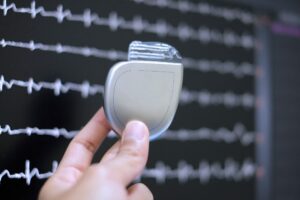Real-Life Rescue: Christian Eriksen’s ICD Saves Career
During UEFA Euro 2020, Danish footballer Christian Eriksen collapsed on the pitch from sudden cardiac arrest. Immediate CPR and AED intervention saved his life. Following his recovery, he had an implantable cardioverter defibrillator (ICD) fitted, allowing him to return to elite football in the Premier League and later with Manchester United.

Eriksen has said:
“I don’t really have any scared feelings about it; I don’t feel my ICD… If it gets hit, I know it is safe enough.”
A sentiment that underscores the confidence provided by modern ICD technology

This powerful recovery story shares similarities with Luton Town’s captain, Tom Lockyer, who collapsed during a Premier League match against Bournemouth in December 2023. He described feeling like he “literally died” as his heart stopped for approximately 2 minutes and 40 seconds before life-saving intervention. Lockyer later had an ICD implanted and is now in recovery, emphasising how AEDs and implantable defibrillators can safeguard lives both on and off the field.
What Treatment Did Eriksen Receive?
Following his on-pitch collapse, Christian Eriksen received an implantable cardioverter defibrillator (ICD), a compact, life-saving device that continuously monitors heart rhythm. Roughly the size of a small smartphone, it connects to the heart via thin leads and is designed to intervene automatically if dangerous arrhythmias are detected.
There are two primary types of ICDs used in cardiac care:
- Subcutaneous ICD (S-ICD): Implanted just under the skin, typically near the side of the chest or armpit. This device functions like an internal defibrillator, delivering a powerful shock to restore normal rhythm during episodes of sudden cardiac arrest.
- Transvenous ICD: Placed below the collarbone and connected directly to the heart via veins, this type not only delivers shocks when needed but can also function like a pacemaker, sending gentle electrical pulses if the heart beats too slowly.
Both types are designed for long-term protection. ICDs typically have a battery life of six to ten years and can be replaced through a minor outpatient procedure under local anaesthetic.
To explore how technologies such as ICD’s and wearable defibrillators protect high-risk individuals before or after an event, read our blog: Wearable Defibrillators in the UK A Life Saving Guide.
Source: www.bbc.co.uk


